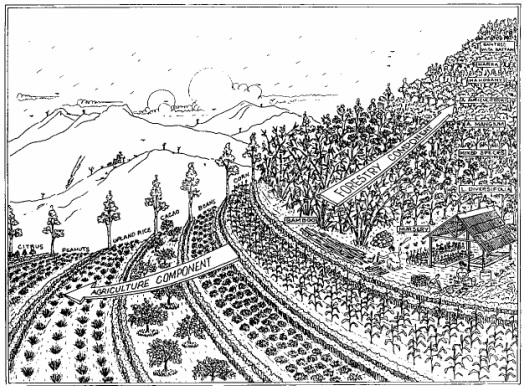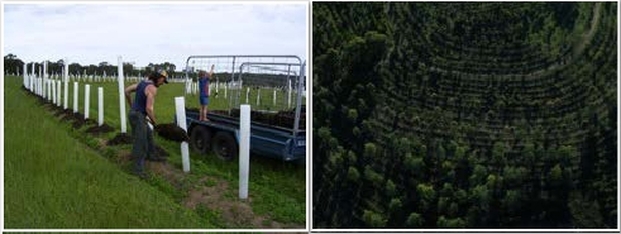Agroforestry
The adage that “diversity is stability” has been widely regarded in the science of ecology and in some of the primary principles upon which permaculture has been built. With this in mind, ESD is constantly looking for ways to enhance the ecological and economic stability of agricultural and residential systems. We feel that agroforestry is a highly appropriate strategy to diversify an operation’s structure and yields.

As the term suggests, agroforestry is the coupling of agriculture and forestry in a complementary way. Though the individual yield of each system is generally less than that of a solitary agriculture or forestry operation, the combined yields of an agroforestry system is largely enhanced. Agroforestry draws on the individual strengths of agriculture and forestry to create a more robust, resilient system.

It was in the late 20s that the potential for developing high-yielding tree crop systems was first espoused by J. Russell Smith in his book, Tree Crops: A Permanent Agriculture. Smith's efforts laid the groundwork for the development of agroforestry, best known in the form of alley cropping - the practice of planting widely spaced rows of tree crops (fruits, nuts, legumes or timber) within livestock pastures, hayfields or other annual cropping systems. These systems 'stack' yields temporarily, enabling growers to continue to harvest their annual or perennial crops, while getting the additional harvest of either fruits or nuts as well as soil conditioning or, in a more long term system, timber. Additionally, the fodder from tree crops can be utilized as an additional source of livestock feed, providing copious quantities of fodder once mature and also giving animals access to a more diverse diet. Agroforestry systems couple beautifully with Keyline design, as their layout and management can be planned to follow Keyline geography.


